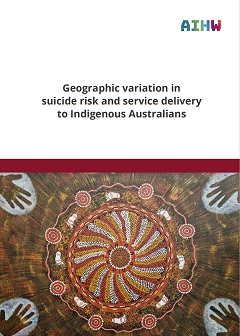Geographic variation in suicide risk and service delivery to Indigenous Australians
Abstract
This report identifies regions (using the Australian Bureau of Statistics’ Indigenous Regions) in which suicide prevention among Aboriginal and Torres Strait Islander people is likely to be relatively challenging compared with other regions. Geographic variation in historic Indigenous suicide rates, socioeconomic circumstances, availability of mental health services and relevant health outcomes is used to classify regions as relatively high, medium or low risk with respect to suicide prevention. This relative classification gives an indication of where circumstances are likely to be particularly challenging and does not imply that suicide prevention is easy or not required in any region. The regions deemed to have the most challenging combination of circumstances were all located in the Northern Territory or Western Australia. The report also presents regression modelling that was done to explore the association between mental health service delivery and recorded suicide rates among Indigenous Australians at the area level (using the Australian Bureau of Statistics’ Statistical Areas Level 3, or SA3s). The analysis found that the nature of the available data, in combination with the number of suicides and the geographic distribution of services, makes it difficult to provide robust insights at the SA3 level.


